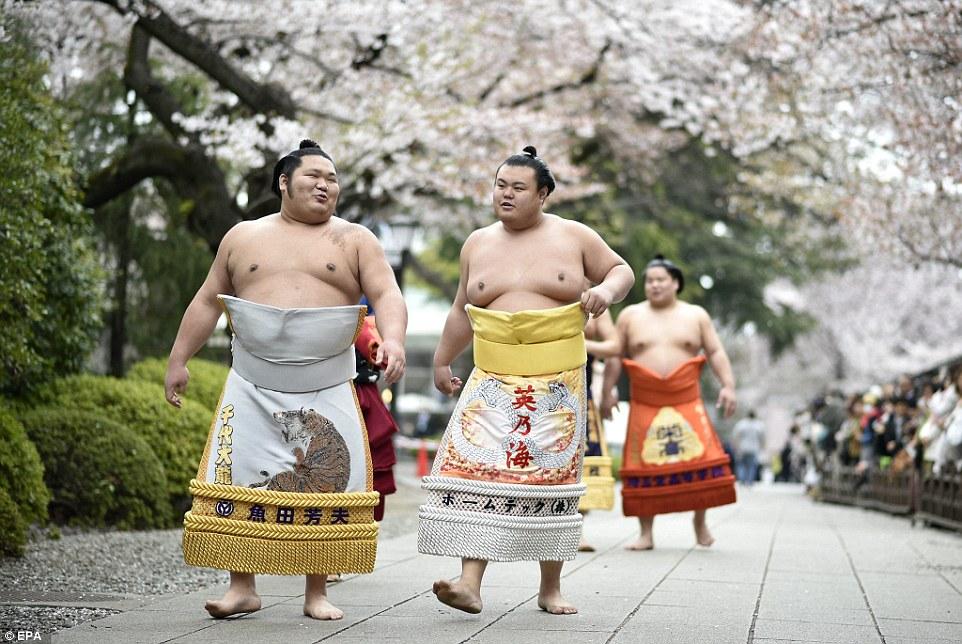
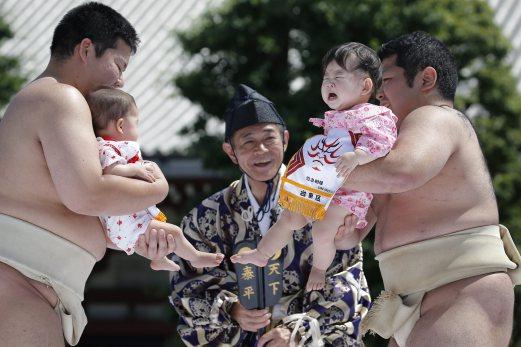
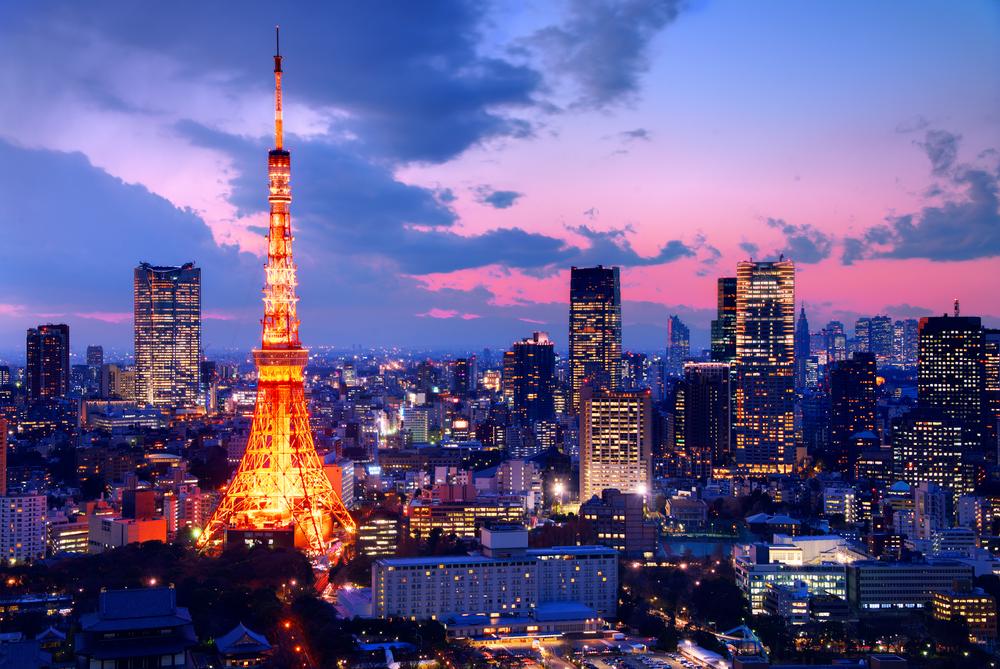
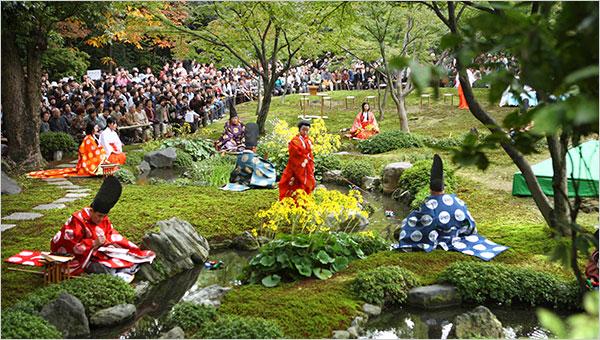
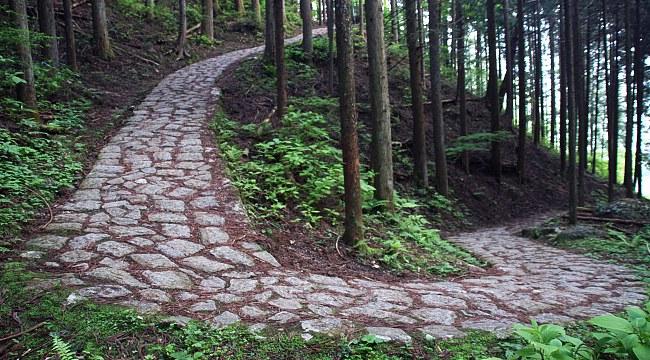
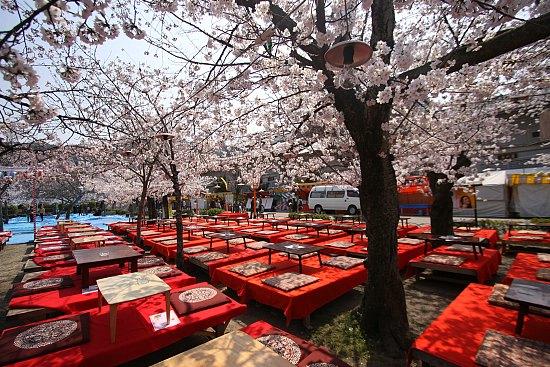
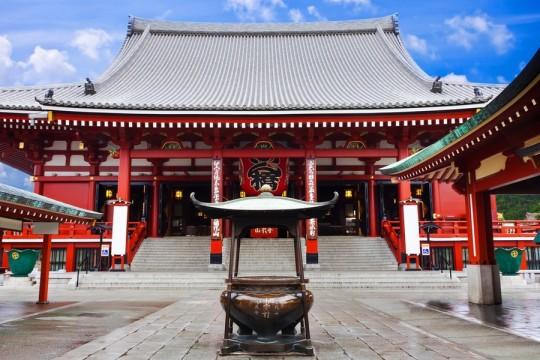
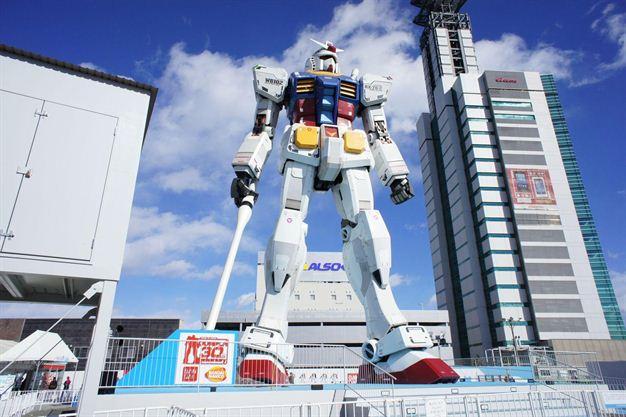
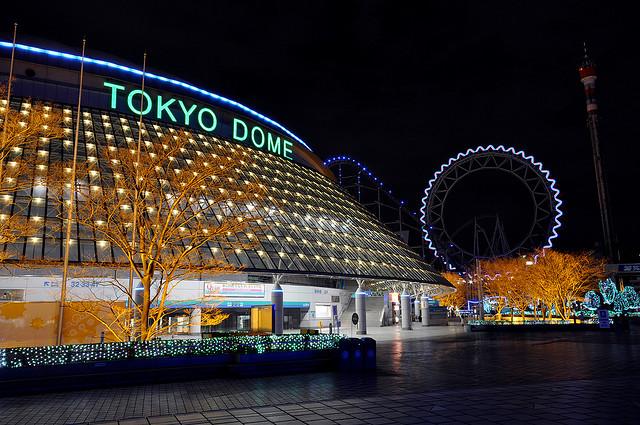
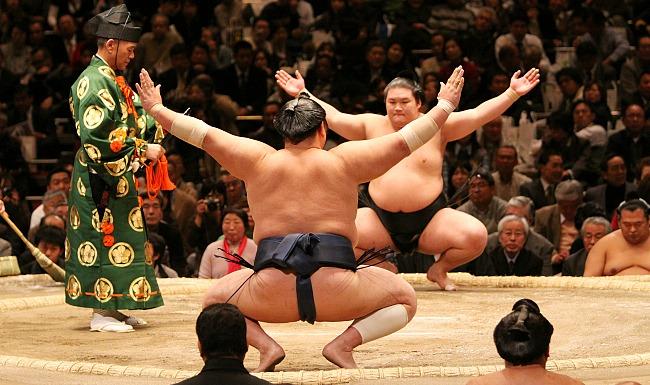
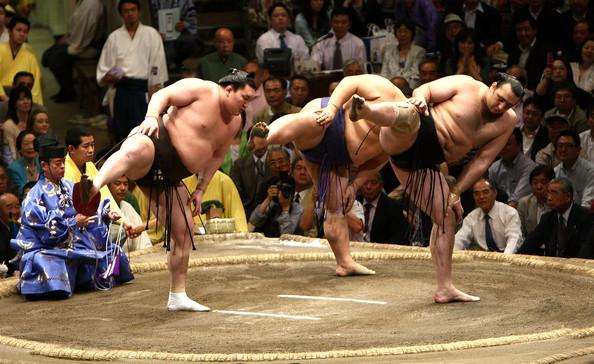
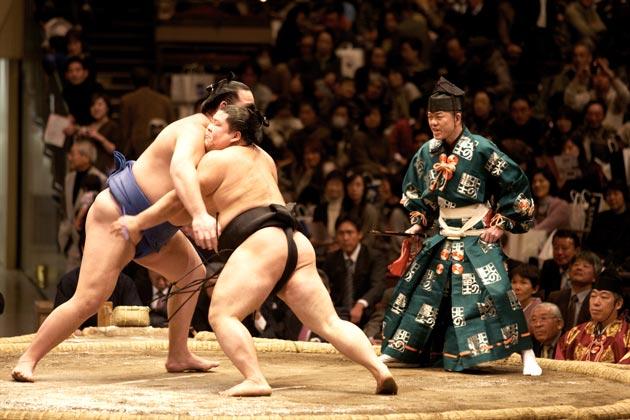
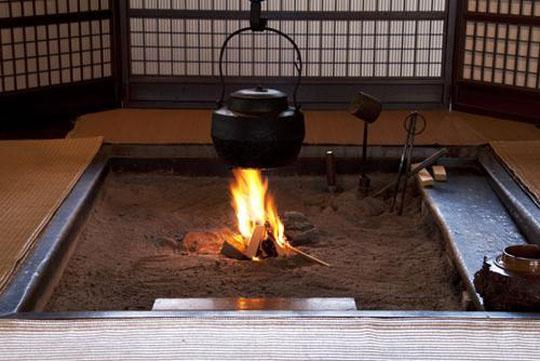
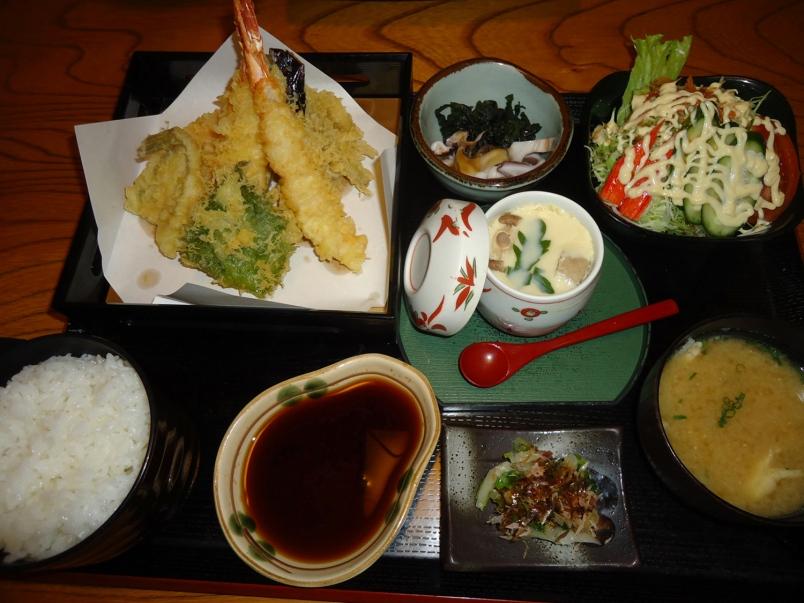
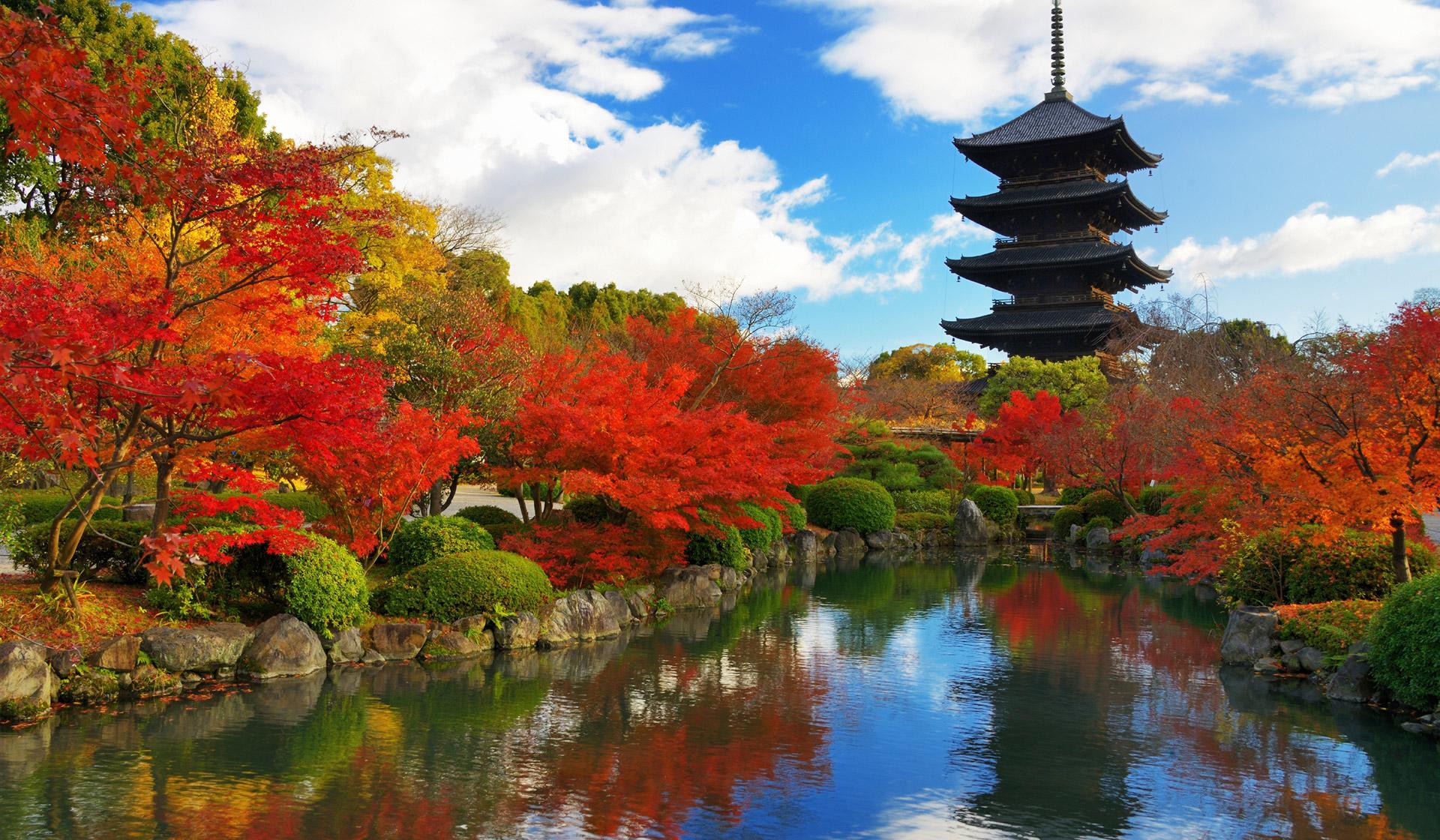
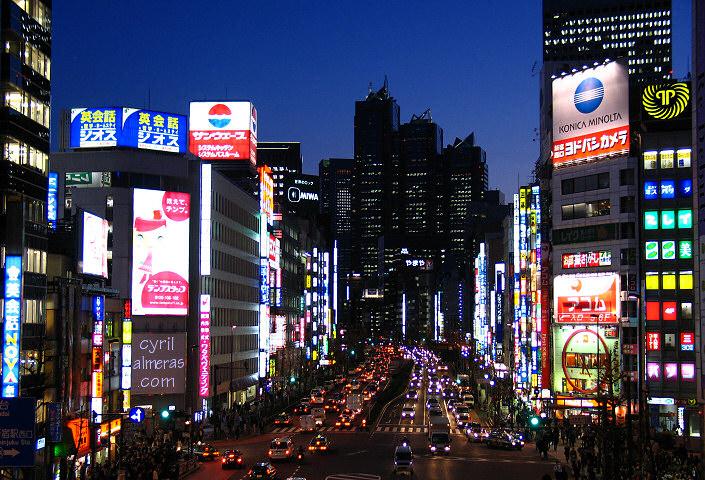
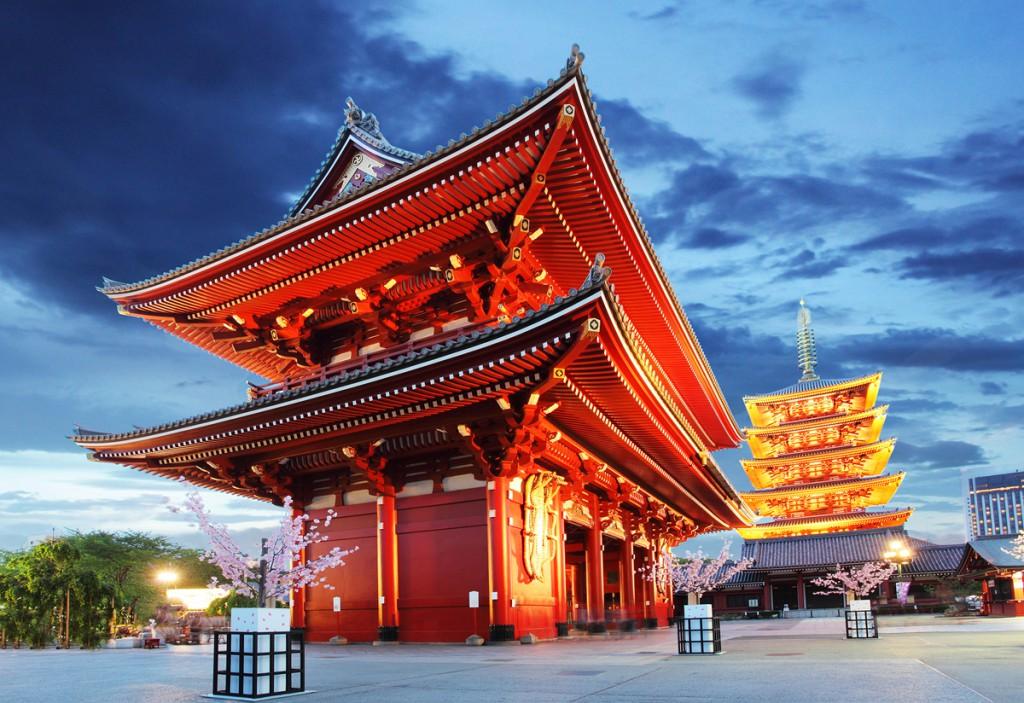
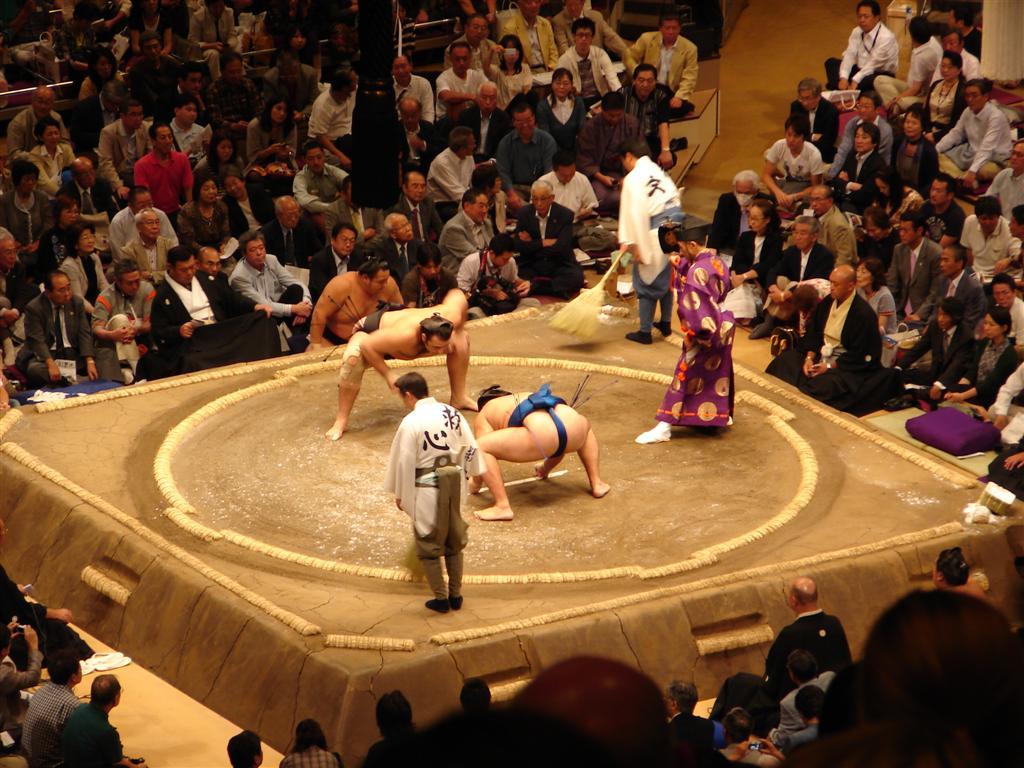
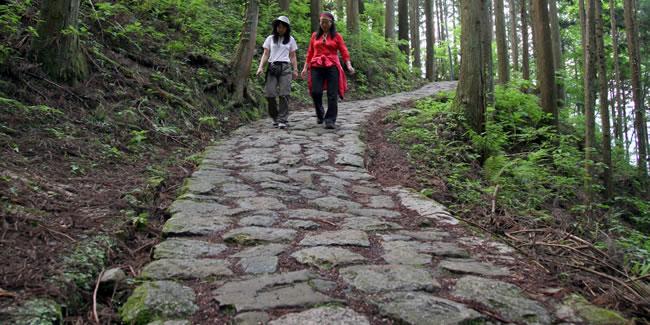
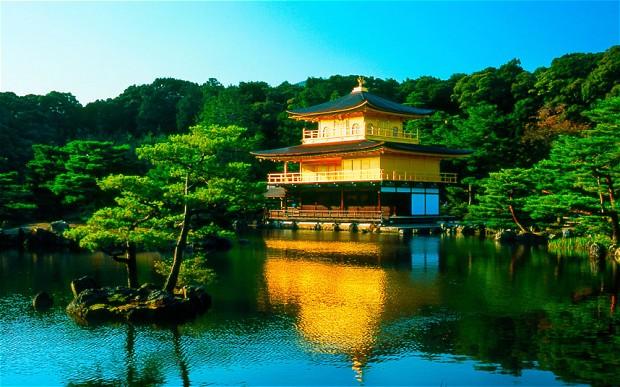
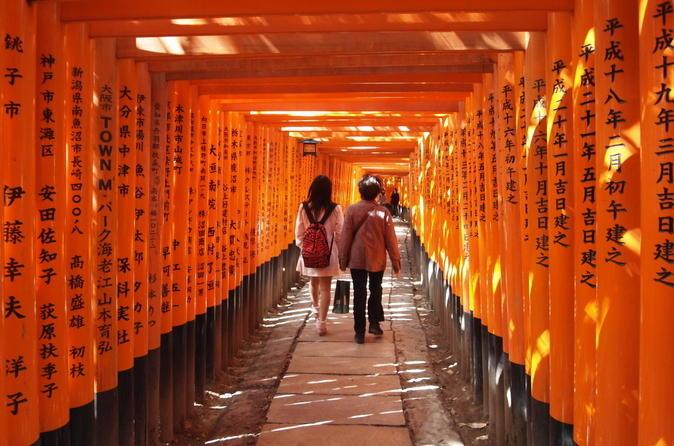
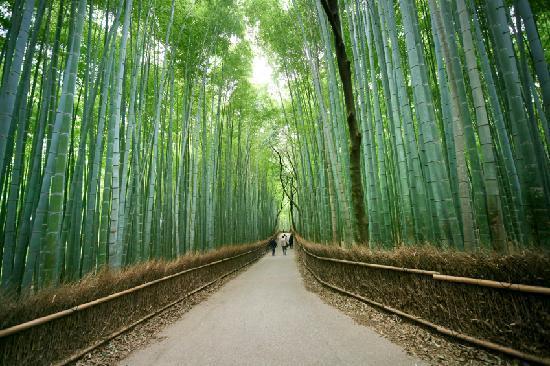
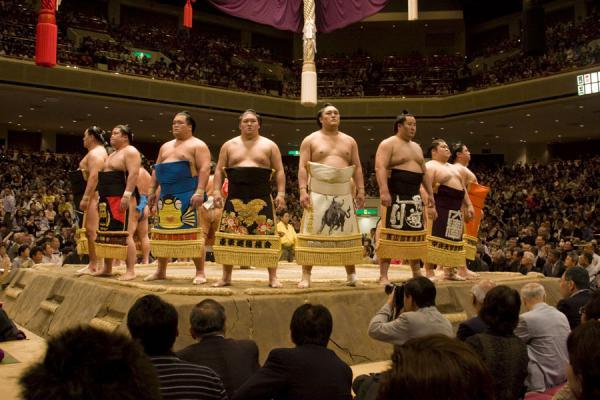
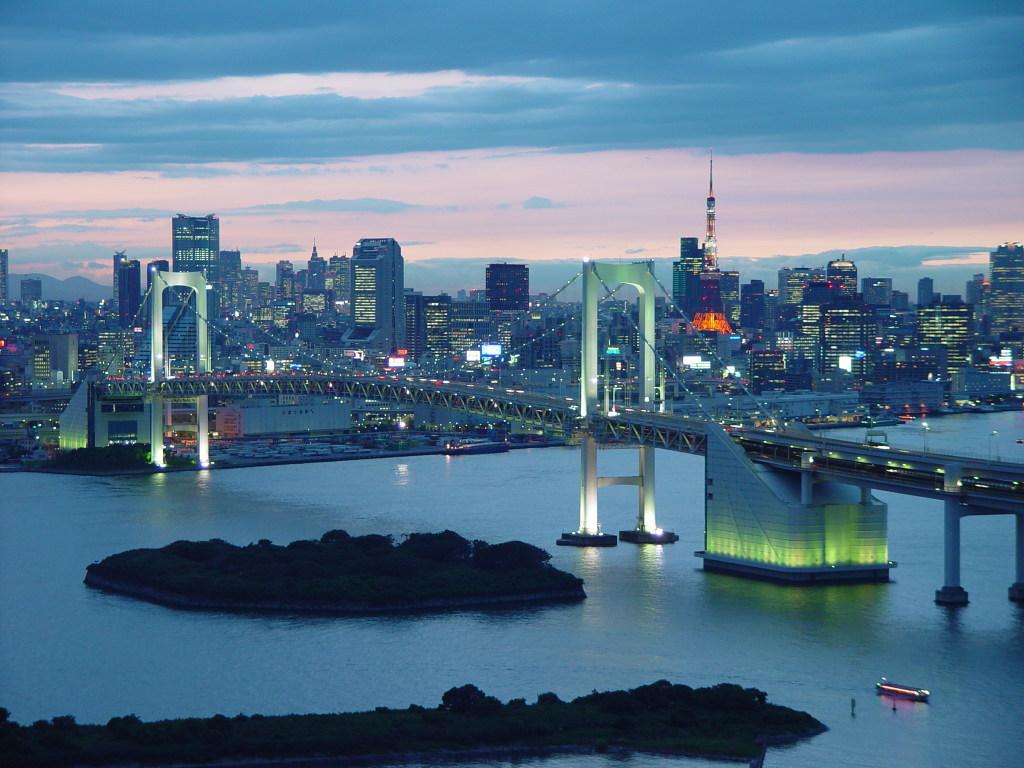
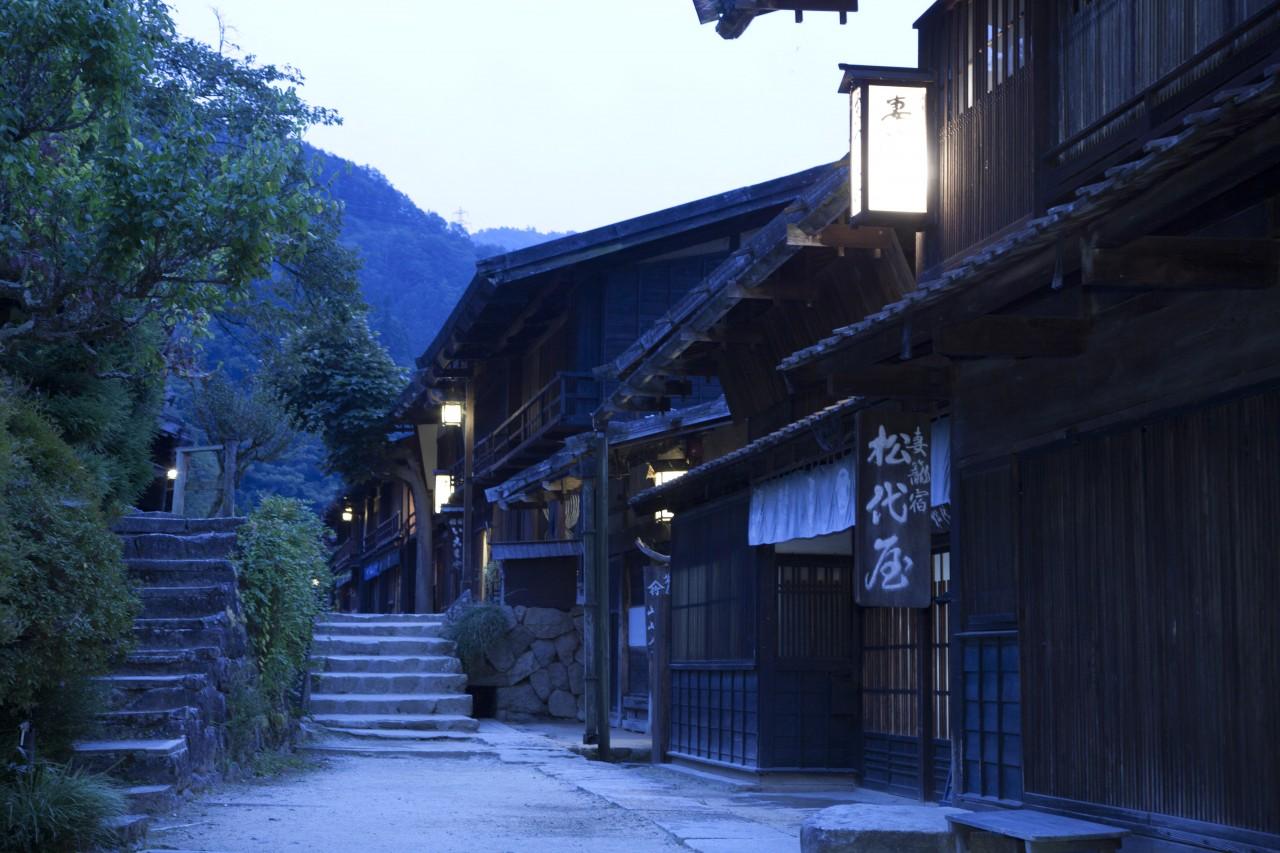
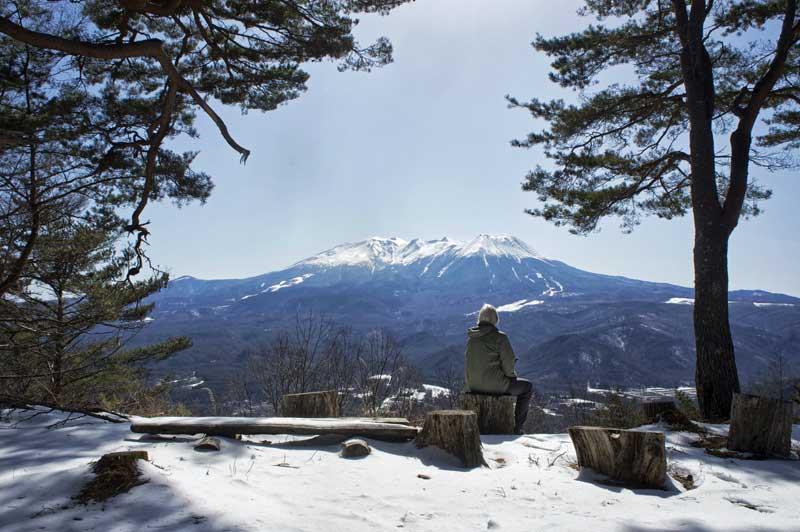
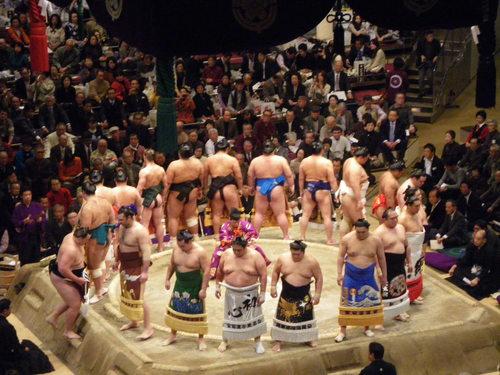
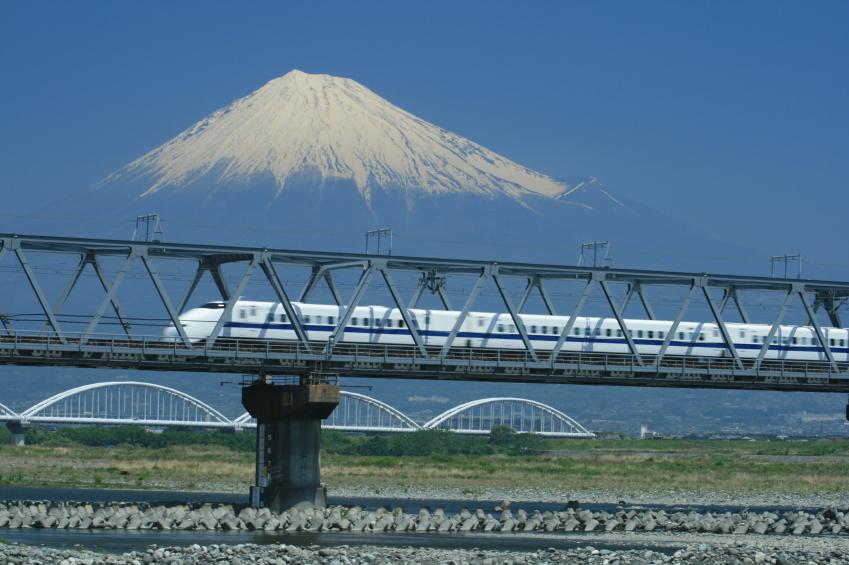
For all its booming industry, Japan is still a land where traditions have an ancestral power. Some, such as judo, flower arrangement and the Japanese garden, have spread all over the world. Others, like the arts of the geisha and the extraordinary ritual of the sumo wrestlers, have so far been too Japanese for transplantation.
The two great fat elephants of men came together with a resounding thud. The public cheered and shout: Smash him! Murder him! At him!
Could these be the same people as those who sit and look at the moon for hours, reciting lyric poetry the while? Were these the people who with infinite patience will produce dwarf trees, who will go in ecstasies over the ‘violin-playing’ of grasshoppers and who dilate their nostrils to snuff the spicy smell of incense while munching lotus seed? They could and were. But they were Japanese, and you realize that just as you do not understand a thing.
The normal Japanese is short, has a slender frame, delicate hands, small feet, and is graceful in his movements. There are many types of them, mixtures of emigrants from Polynesia, the Malay Island, China, Korea and Mongolia, to say nothing of the Caucasian Ainu of Hokkaido. Some are round-headed and big-jawed, and have high cheekbones. Other have narrow, strongly-marked features more Indian than Asiatic. Some have flat, small nose; others have aquiline noses. The slant of their eyes varies considerably.
Sumo wrestlers are something apart. They are giant, who would attract attention in any country. They are giants, who would attract attention in any country. They are what one would imagine the fruit of an affair between a phlegmatic, somnolent hippo and an aggressive, heavy-limbed gorilla to be like.
They are so fat that they cannot even tie their own shoelaces, and many of them would have difficulty in clasping their hands over their stomachs. Like most Orientals they have little hair except on their heads, where it is allowed to grow unchecked until it can be knotted on top, as the old samurai used to wear it. When they throw off their elegant kimonos and stand there in the ring, as good as naked – for they only have a narrow strip of cloth between their quivering fat thighs – the hairlessness of the rest of their bodies is emphasized. The G-string is fastened fore and aft to a stout leather belt, covered with material which has a fringe in front to act as an apron.
Japanese wrestlers weigh from sixteen to twenty-six stone and most are between six feet and six feet four inches tall; though one record giant was seven feet eight inches and weighed twenty-eight stone eleven pounds.
Are you interested to know more about the wrestling of the giants?
Let us hear from you at +91 33 4046 4646
Itinerary
Day 1
International Outbound Flight
Today you will begin your journey by boarding your international outbound flight to Tokyo.
Day 2
Tokyo
You arrive in Tokyo, and will be met by our representative and shown to the correct limousine bus to take you to your city centre hotel. Spend the rest of the day exploring at leisure.
Day 3
Tokyo
Have a day in Tokyo to explore at your leisure.
Day 4
Tokyo
Make your way to Kamakura to see the Giant Buddha (daibutsu).
Day 5
Tokyo, Matsumoto
Take the train to the small city of Matsumoto this morning. Explore the famous "Crow Castle" and other sights.
Day 6
Matsumoto, Tsumago
Take the train to the quiet and picturesque village of Tsumago, where you can walk part of the historic Nakasendo highway. You stay overnight in traditional accommodation.
Day 7
Tsumago , Kyoto
Travel by local train and bullet train to Kyoto, Japan's cultural heart. After checking into your hotel, we recommend that you set out to visit some of the iconic sights in the North West of the city, including the Golden Pavilion
Day 8
Kyoto
A full day to explore more of Kyoto's highlights. In the evening your guide will collect your for a tour of the Geisha district.
Day 9
Kyoto
Take a day trip to nearby Nara, Japan's ancient capital and famed for the Giant Buddha and Todaiji Temple. Return to Kyoto via Fushimi Inari Shrine for its stunning 'tunnels' of red torii gates
Day 10
Kyoto, Tokyo
Start the day with a chance to try your hands at a traditional cultural activity such as a tea ceremony. Later, return to Tokyo by bullet train for your final night in Japan.
Day 11
Tokyo, International Return Flight
Take the shared airport bus service to Narita airport for your flight home. Your return flight will arrive the same day
For assisted tour booking and customization according to your requirement, please call: +91 33 4046 4646
Price on request
Highlights
Tokyo's Sensoji temple
Walking the Nakasendo Highway
Stay in a ryokan
Learn how to make sushi
Travelling by bullet train
Accommodation:
Mitsui Garden Hotel Ginza
Buena Vista Hotel
Fujioto Ryokan
Royal Park Hotel THE Kyoto
As suggested and to be customized as per request

Terms & Conditions Applied
For assisted tour booking and customization according to your requirement, please call: +91 33 4046 4646
 Loading..
Loading..